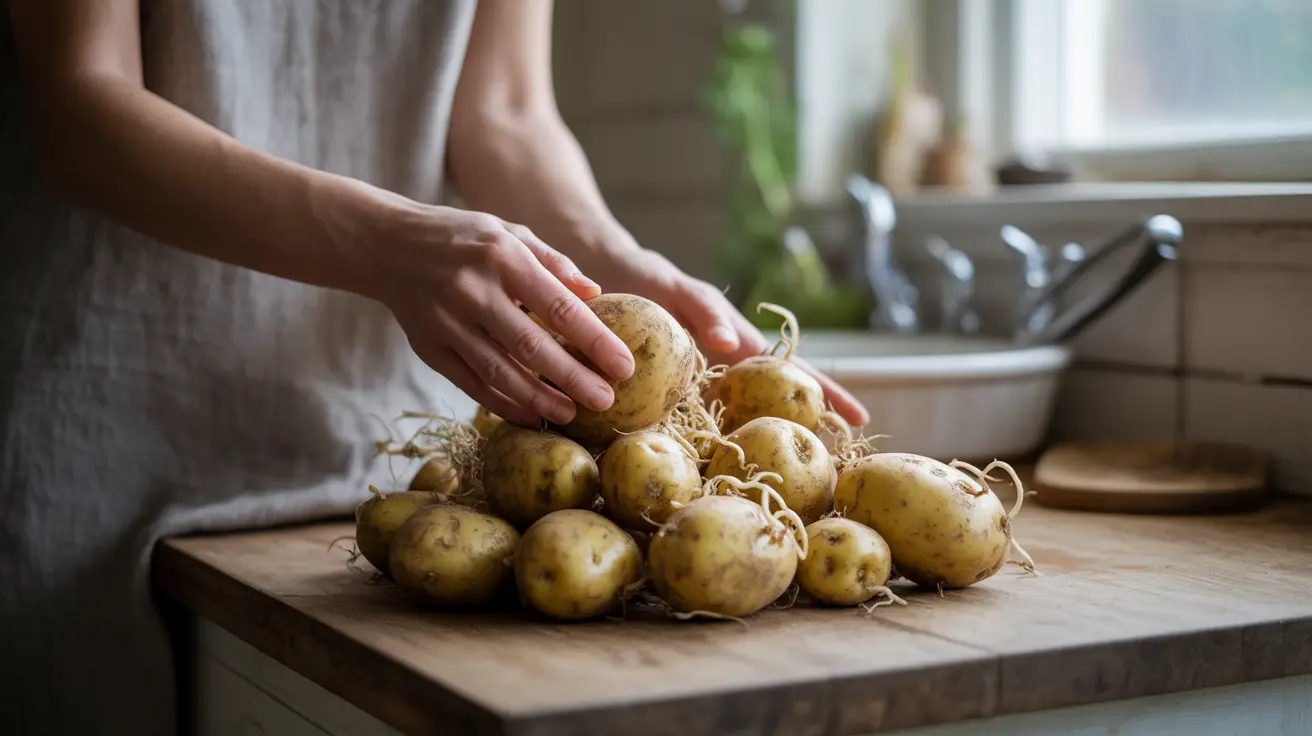When potatoes begin to sprout, many people wonder about their safety for consumption. Understanding the risks associated with sprouted potatoes is crucial, as these common kitchen staples can develop potentially harmful compounds under certain conditions. This comprehensive guide will help you understand when sprouted potatoes become dangerous and how to handle them safely.
Understanding Potato Sprouting and Toxicity
Potatoes naturally contain glycoalkaloids, primarily solanine and chaconine, which serve as the plant's natural defense mechanisms. When potatoes sprout, these compounds can increase to potentially dangerous levels, particularly in and around the sprouts, eyes, and any green parts of the potato.
The presence of sprouts indicates that the potato is actively growing, which triggers an increase in these toxic compounds throughout the tuber. This natural process can make an otherwise healthy food potentially harmful for consumption.
Signs of Dangerous Potato Sprouting
To identify potentially toxic sprouted potatoes, look for these warning signs:
- Long or numerous sprouts
- Green discoloration beneath the skin
- Soft or wrinkled texture
- Bitter taste (if sampled)
Health Risks and Symptoms
Consuming potatoes with elevated glycoalkaloid levels can lead to various symptoms, ranging from mild to severe. Common symptoms include:
- Nausea and vomiting
- Stomach cramps
- Diarrhea
- Headache
- Dizziness
- In severe cases, neurological symptoms
The severity of symptoms typically depends on the amount consumed and the concentration of toxic compounds in the potato.
Safe Handling of Sprouted Potatoes
While sprouted potatoes can pose health risks, there are ways to safely handle them:
- Remove all sprouts completely
- Cut away any green parts
- Peel the potato thoroughly
- Discard potatoes with excessive sprouting or greening
However, if the potato is very soft, significantly sprouted, or shows extensive greening, it's safer to discard it entirely.
Special Considerations for Vulnerable Groups
Certain populations should exercise extra caution with sprouted potatoes:
- Pregnant women
- Young children
- Elderly individuals
- People with compromised immune systems
These groups may be more susceptible to the effects of potato glycoalkaloids and should avoid sprouted potatoes altogether.
Prevention and Storage Tips
Proper storage is key to preventing potato sprouting:
- Store in a cool (45-50°F), dark place
- Maintain good air circulation
- Keep away from onions and other produce
- Check regularly for signs of sprouting
- Use within 2-3 weeks of purchase
Frequently Asked Questions
Are sprouted potatoes toxic to eat and what makes them harmful?
Sprouted potatoes can be toxic due to elevated levels of glycoalkaloids, particularly solanine and chaconine. These compounds increase when potatoes sprout and can cause adverse health effects if consumed in significant quantities.
What symptoms can occur after eating sprouted potatoes and how serious are they?
Symptoms can include nausea, vomiting, stomach cramps, diarrhea, headache, and dizziness. In severe cases, neurological symptoms may occur. The severity depends on the amount consumed and the concentration of toxic compounds.
Can removing the sprouts from a sprouted potato make it safe to eat?
Yes, if the potato is still firm and not extensively sprouted, removing the sprouts, cutting away any green parts, and peeling the potato can make it safe to eat. However, if the potato is very soft or extensively sprouted, it should be discarded.
Why should pregnant women avoid eating sprouted potatoes?
Pregnant women should avoid sprouted potatoes because they are more susceptible to the effects of glycoalkaloids. These compounds could potentially affect fetal development and cause adverse reactions in the mother.
How should potatoes be stored to prevent sprouting and reduce toxicity risks?
Store potatoes in a cool (45-50°F), dark place with good air circulation. Keep them away from onions, check regularly for sprouting, and use within 2-3 weeks of purchase to minimize sprouting risk.




